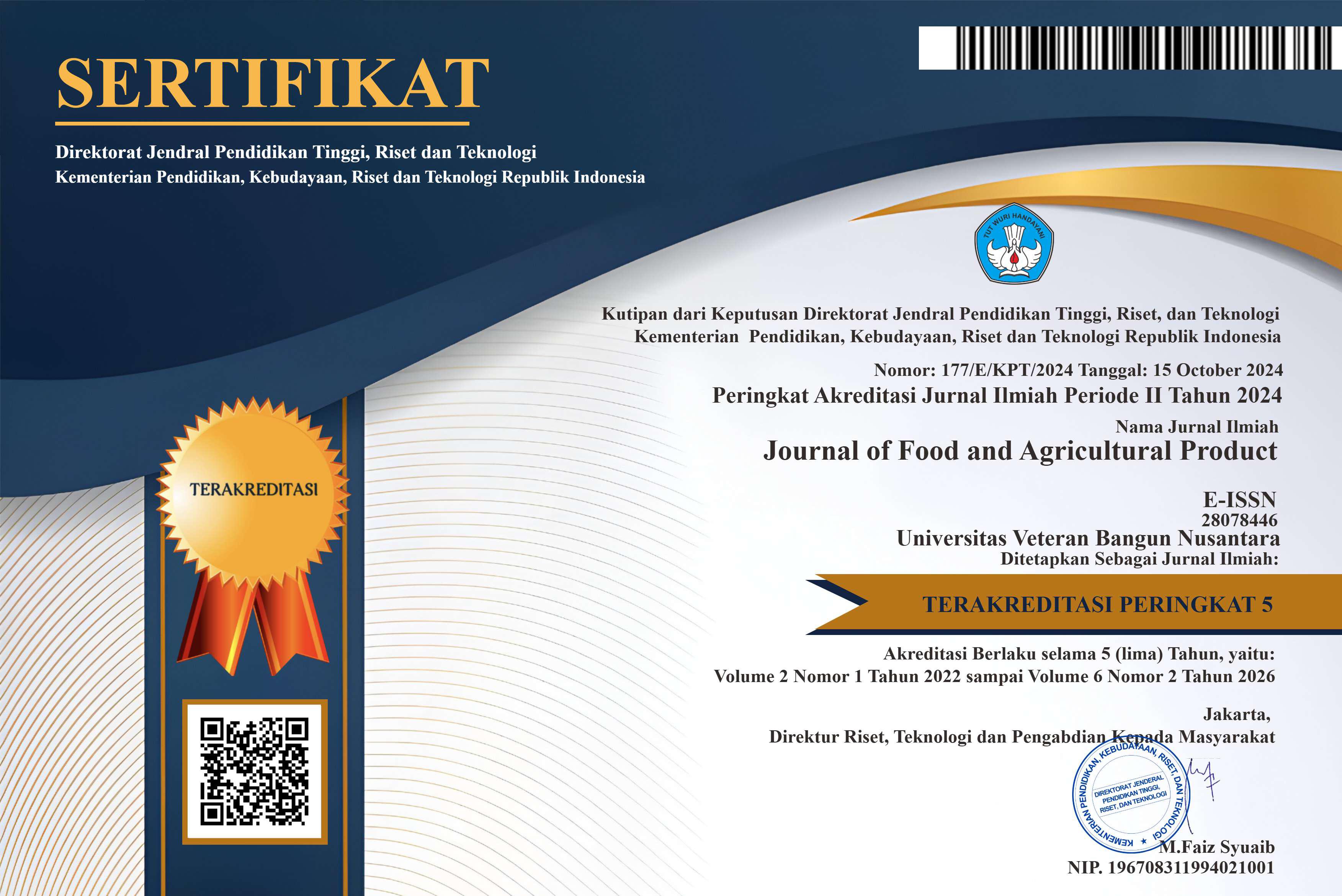The Quality Of pH, Moisture Content, and Sugar Content Of Kolang-Kaling Candy Made from Various Types Of Sugar
DOI:
https://doi.org/10.32585/jfap.v3i2.4607Abstract
This study aims to determine changes in cooking shrinkage, water content, pH, sugar content, appearance of mold and organoleptic of sweets and fro made using different types of sugar. The sugars used in this study were palm sugar (GA), coconut sugar (GK) and cane sugar (GT). Sugar is dissolved in distilled water to become a 60% (w/v) sugar solution. Kolang-kaling is boiled in sugar solution for 1 hour until gelatinization of the solution occurs. This study used a completely randomized design (CRD) factorial pattern and each treatment was repeated 3 times. Variable observations were made on the 0th, 5th, 10th and 15th days. In the organoleptic test using 60 panelists. There was an increase in the proportion of cooking losses with increasing storage time which resulted in an increase in water content and a decrease in pH levels. Sugar levels in all treatments increased on the 5th day of observation and decreased on the 10th and 15th days. The appearance of mold was seen on the 5th, 10th and 15th days. The highest aroma score on the GA, the highest taste score on the GT, the highest texture score on the GT, the highest color score on the GA, and the highest overall score score on the GT. Statistically, panelist acceptance for all treatments was not significantly different (P<0.05).
Keywords: Fruit and fro, Sweets, Palm Sugar, Coconut Sugar, Cane Sugar
Downloads
Downloads
Published
How to Cite
Issue
Section
License

This work is licensed under a Creative Commons Attribution-NonCommercial-NoDerivatives 4.0 International License.




